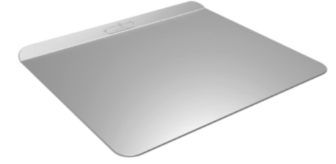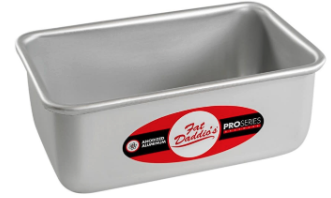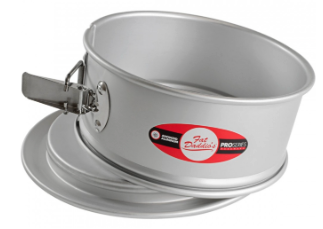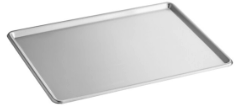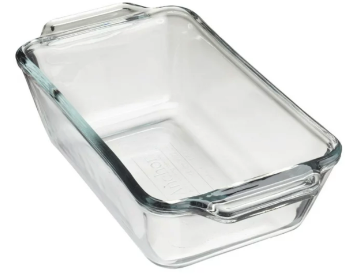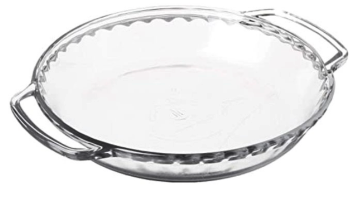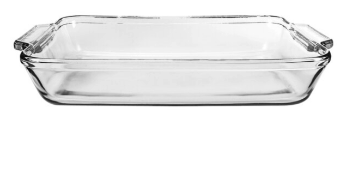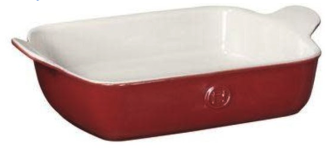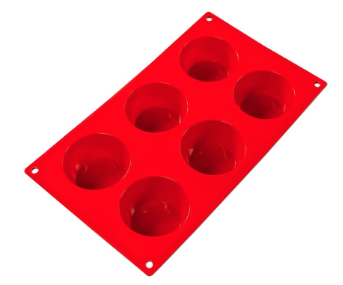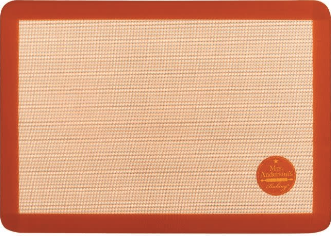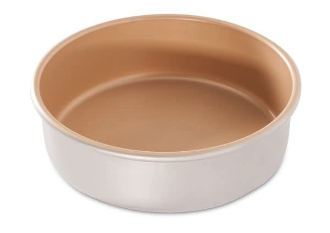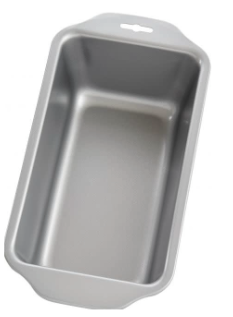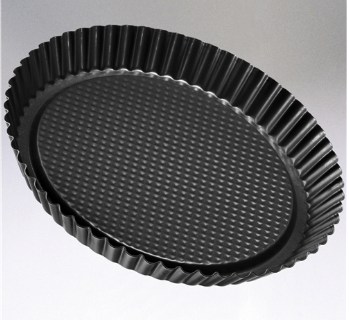Paige Knight - 27 / Oct / 2023
Types of Bakeware

From baking sheets and bread loaf pans to ramekins and pizza stones, bakeware comes in a vast variety of shapes, sizes, and materials. Most home bakers might not think they need to know the subtle differences between a ramekin and a custard cup (hint: it’s all in the flared sides), but knowing your way around common bakeware can mean the difference between a delicate, elegant loaf of bread and a deflated disaster.
In our types of cookware blog, we discussed the various stovetop tools that you might encounter in the average kitchen – or that you might want to add to yours. Now, it’s time to move things from the stove to the oven to talk about the types of bakeware you might need – and how best to use them.
Bakeware Materials
While shape and size has a big impact on how your dishes turn out, so does the material your bakeware is made of. The browning and texture of your cookies depends on the color, thickness, and material your cookie sheet is made of, and you may even need to alter your cooking methods depending on these factors. So, before you decide on a type of bakeware, let’s consider which materials best fit your unique goals.
Aluminum
An excellent conductor of heat, aluminum is probably the most common material used in bakeware. It is light and inexpensive, making it a practical choice for the average home baker, and it is highly responsive to changes in temperature.
However, it’s important to consider that pure aluminum tends to be reactive with acidic foods, adding a metallic taste and a dull, gray tint. To combat this, aluminum is often clad with stainless steel or lined with a non-stick coating. Alternatively, a process called anodization – where aluminum is hardened, giving it a dark gray color and increased durability – has become popular in recent years.
Types of Bakeware That Use Aluminum
|
|
|
|
|
Stainless Steel
Stainless steel is ideal for anything from roasting meats and vegetables to making baked goods. Stainless steel is durable, non-reactive, and resistant to corrosion, but it’s not a great conductor of heat. To avoid uneven cooking, stainless steel is often enhanced with an aluminum or copper core.
Types of Bakeware That Use Stainless Steel
|
|
Glass
Do you like watching your food while it cooks? Then glass bakeware is a great fit for you! Glass bakeware retains heat well, promoting even cooking and making it perfect for dishes that need to bake at a low temperature for long periods of time, like casseroles, lasagnas, and desserts like banana bread.
Though it retains heat well, glass bakeware isn’t a great conductor of heat, which can sometimes lead to over-baked edges and under-baked centers. To counter this, we recommend altering your cooking process when using glass bakeware. Just lower your oven temperature by about 25 degrees Fahrenheit and add a few extra minutes to your bake time, and you’ll have a beautiful dish cooked to perfection.
Types of Bakeware That Use Glass
|
|
|
Ceramic and Stoneware
Ceramic and stoneware bakeware is made from clay that is fired at a high temperature, making it durable and heat resistant. The main differences between the two is that stoneware is nonporous whereas ceramic is not, but both are versatile options that have a self-regulating quality allowing them to hold heat evenly for long periods of time without burning food, which is more common with other bakeware materials. Both materials are known for featuring beautiful decorations and colors that make them excellent for serving dishes from oven to table.
In addition to its aesthetic appeal, ceramic and stoneware is also durable and food safe – just be sure to avoid exposing them to abrupt temperature changes, which can cause cracking, and make sure that they’re lead-free before buying.
Types of Bakeware That Use Ceramic and Stoneware
|
|
|
|
Silicone
Silicone is a highly versatile material that is able to withstand temperatures from -40 degrees Fahrenheit to 572 degrees Fahrenheit (though this temperature range can vary, so check with your specific manufacturer). This means that it’s able to be used in the oven, freezer, and microwave, and its flexible texture means that it can be folded for easy storage.
Though this material is highly versatile, it’s not a great conductor of heat; instead of absorbing heat like other bakeware materials, silicon allows heat to transfer evenly to the food it cooks. While this promotes even heating, it also means that extra baking time may be needed to make sure that food is fully cooked.
Types of Bakeware That Use Silicone
|
|
Non-Stick
Non-stick bakeware is typically made of steel or aluminum that has a non-stick coating added to it, which prevents food from sticking. This lends to easy clean up, making it popular for making delicate items like cakes, muffins, and pancakes. This material also eliminates the need for extra baking steps, like greasing a pan or adding muffin papers.
However, non-stick coating often gives bakeware a darker surface, which can affect baking results. Non-stick bakeware is also not known for its long-term durability, featuring an average life of two to three years.
Types of Bakeware That Use Non-Stick
|
|
|
|
|
Other Considerations
Thickness
While single-layer bakeware may do the job at a relatively inexpensive price point, it isn’t as durable and runs the risk of uneven heating, leading to uneven cooking. To get the biggest bang for your buck, we recommend multi-layer pans that are more durable, leading them to last longer and provide consistent cooking results.
Color
The color of your bakeware can greatly affect the way your dish turns out. Dark colors absorb more heat than light colors, so dark-colored bakeware often leads to over-baked edges with under-baked centers, whereas lighter bakeware renders more even results. When using darker bakeware, try extending the baking time and lowering the oven temperature by 25 degrees Fahrenheit.
Bakeware Types
Baking Sheets
Baking sheets (AKA cookie sheets) are flat, rectangular sheets of metal that are highly versatile. Used to do anything from baking cookies to roasting vegetables and meats, they come in a variety of materials, including aluminum, stainless steel, and non-stick. Baking sheets are made in a few different styles, including:
- Rimmed baking sheets: The most common type of baking sheet, these feature raised edges on all four sides, which help to keep food contained within the baking sheet.
- Rimless baking sheets: These baking sheets are completely flat, making them great for making flatbreads and pizzas.
- Jelly roll baking sheets: These are similar to rimmed baking sheets, but are slightly smaller and narrower, making them perfect for making jelly rolls, bar cookies, and smaller baked goods.
- Air insulated baking sheets: These baking sheets are perfect for making delicate foods, as they have a layer of air between the two pieces of metal, which promotes even baking and helps prevent burning.
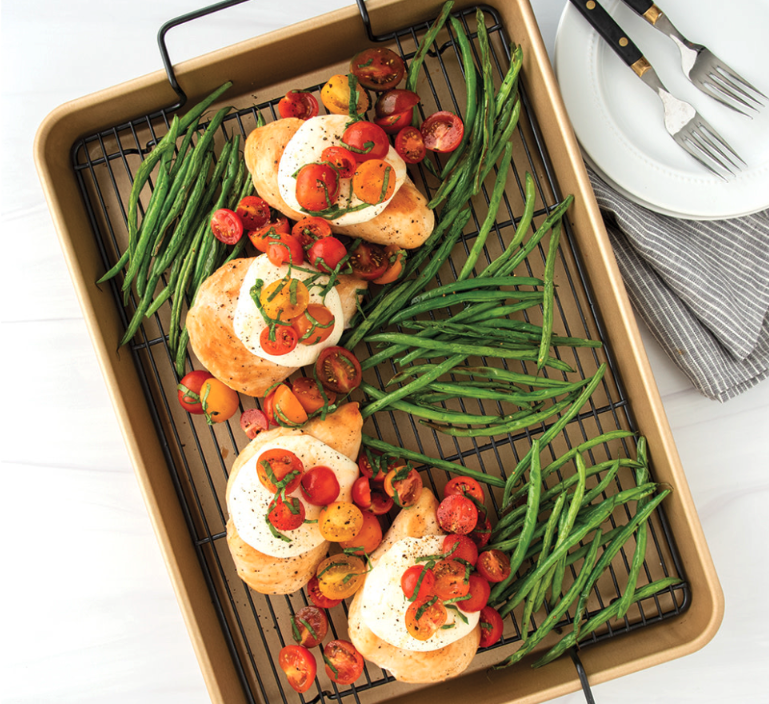
NordicWare Non-Stick High-Sided Oven Crisp Baking Tray
Popular Baking Sheets
- Fat Daddio’s Baking Sheet Quarter or Half Baking Sheet Pan
- NordicWare Non-Stick High-Sided Oven Crisp Baking Tray (pictured above)
- NordicWare Naturals Aluminum Insulated Baking Sheet
Baking Dishes
Baking Dishes are large, rectangular, oven-safe dishes made out of glass, stoneware, or ceramic. Perfect for cooking a wide variety of dishes, from lasagnas and casseroles to cakes and brownies, these are highly versatile tools for any kitchen. They also come in various shapes and sizes, with the most common dimensions being 9x13 inches, 8x8 inches, and 9x9 inches.
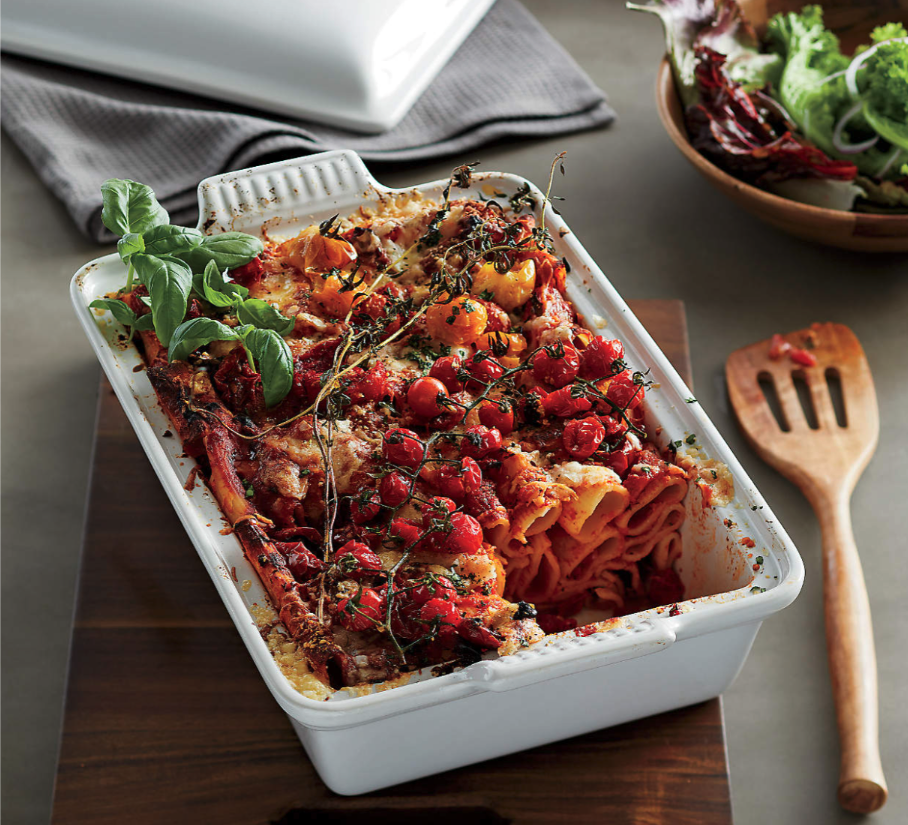
Le Creuset Heritage Rectangular Casserole Dish
Popular Baking Dishes
- Le Creuset Heritage Rectangular Casserole Dish (Pictured above)
- Emile Henry USA Corp. Modern Classics Rectangular Baker
- Le Creuset Heritage Square Baking Dishes, Set of 2
Bread Loaf Pans
Bread loaf pans are a type of bakeware designed to bake bread, meat loaf, and loaf-shaped cakes. Commonly made using aluminum, stainless steel, glass, or non-stick material, bread loaf pans are great for making everything from sandwich and zucchini bread to pound cakes. Bread loaf pans come in a variety of shapes and sizes, including:
- Standard bread loaf pans: These pans are rectangular and typically measure 9x5 inches in size, though they occasionally come in smaller or larger sizes.
- Mini bread loaf pans: Great for making individual– or gift-sized breads and cakes, mini bread loaf pans come in various shapes, including square and oval.
- Long bread loaf pans: Specialized for baking Italian or French bread, long bread loaf pans are simply elongated versions of standard loaf pans.
- Pullman bread loaf pans: If you’ve ever wanted to make the perfect sandwich-style bread right at home, this is the pan for the job. Featuring a sliding lid, pullman bread loaf pans are able to render perfectly rectangular loaves.
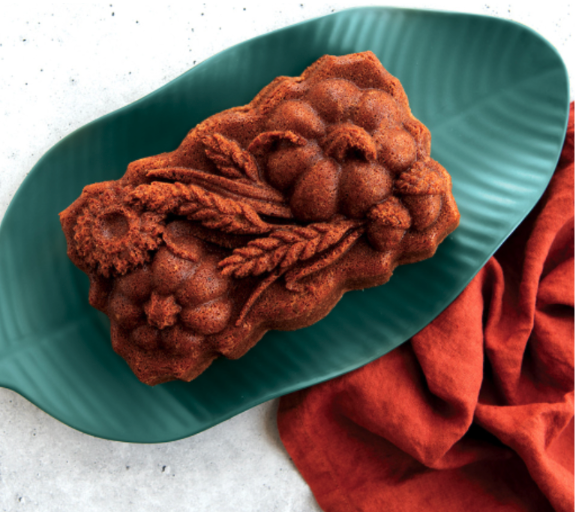
Cake made using NordicWare Sunflower and Pumpkin Loaf Pan
Popular Bread Loaf Pans
- Fat Daddio’s 9x5 Inch Loaf Pan
- NordicWare Apple Basket Loaf Pan
- Mrs. Anderson’s Non-Stick 9 Inch Loaf Pan
- NordicWare Sunflower and Pumpkin Loaf Pan (pictured above)
Cake Baking Pans
Cake pans are an essential and versatile piece of bakeware that come in various sizes, shapes, and materials. Often made using aluminum, silicone, or non-stick material, cake pans encompass a wide range of styles, including:
- Traditional Cake Pans: These pans come in round, square, or rectangular shapes, and they are perfect for making a single or layer cake. Traditional cake pans are also often used to make brownies, bars, and other desserts.
- Muffin Pans: Muffin and cupcake pans are perfect for making bite-sized sweet treats. The creative cook might even use these to make individual-sized savory dishes, like quiches and frittatas. They come in a variety of sizes, including standard, mini, jumbo, and even specialty shapes like stars or hearts.
- Springform Baking Pans: These are specialty cake pans that feature a removable bottom and a latch that allows the sides to be opened and removed from the cake with ease. These types of cake pans are used for delicate cakes, most notably cheesecakes.
- Bundt Cake Baking Pans: These are very distinctive specialty cake pans with a specialized shape that is optimal for baking bundt cakes. Their ring-like shape with a central tube in the middle allows for an even distribution of heat all throughout the cake. While traditionally used to bake bundt cakes, these pans can also be used to add an extra flair to other desserts, like coffee cakes.
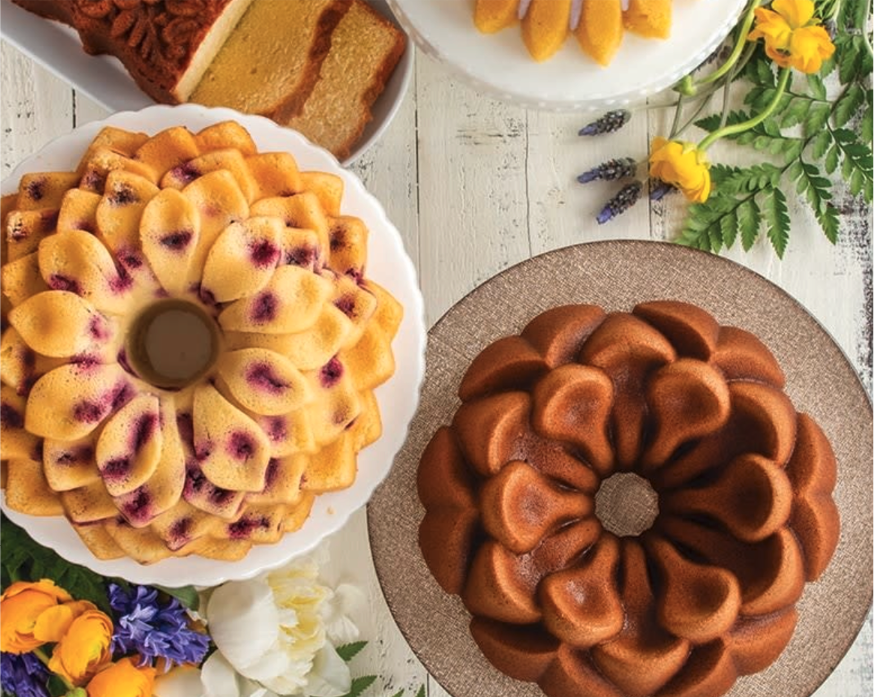
Cake made using NordicWare Magnolia 10-Cup Bundt Pan
Popular Cake Pans
Traditional Pans
- Fat Daddio’s Sheet Cake Pan
- NordicWare Naturals Non-Stick Round Layer Cake Pan
- Fat Daddio’s Round Removable Bottom Cake Pan
Muffin Pans
- Fat Daddio’s Silicone Muffin Pan
- NordicWare Naturals Jumbo Muffin Pan
- USA PAN Nonstick Mini Muffin Pan
Springform Pans
- Fat Daddio’s Springform Pan
- Frieling USA Glass Bottom Springform Non-Stick Pan
- Mrs. Anderson’s Non-Stick Springform Pan 10 Inches
Bundt Cake Pans
- NordicWare Magnolia 10-Cup Bundt Pan (pictured above)
- NordicWare Toffee Original 12-Cup Bundt Pan
- NordicWare 75th Anniversary Braided Bundt Pan
Roasting Pans
Roasting pans are used to cook roasts, whole poultry, vegetables, and baked goods. They have a rectangular shape and a flat bottom with shallow sides.
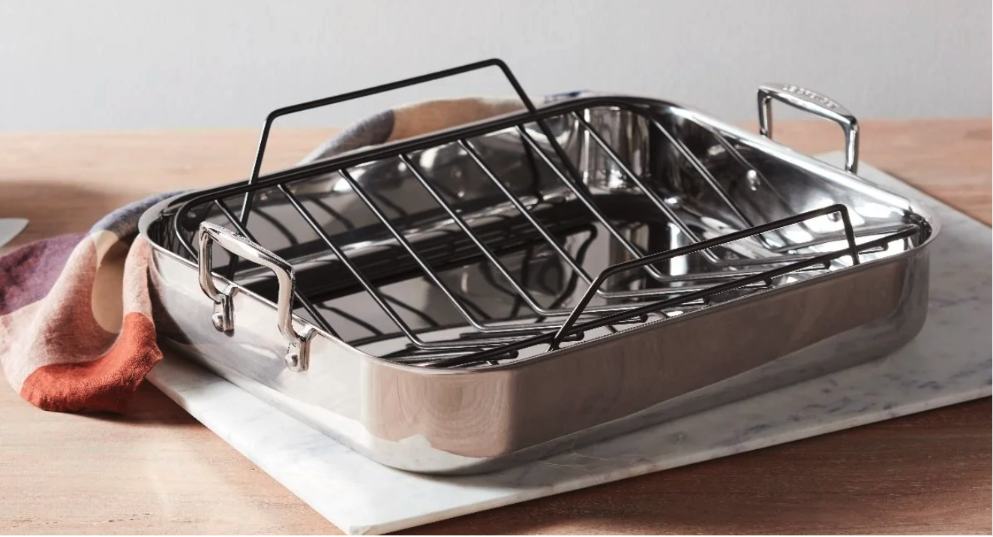
Le Creuset Small Stainless Steel Roasting Pan
Popular Roasting Pans
- Le Creuset Small Stainless Steel Roasting Pan w/ Nonstick Rack (pictured above)
- NordicWare Large Copper Roaster
- NordicWare Extra Large Copper Roaster with Rack
Pie and Tart Pans
Pie and tart pans are essential to any kitchen, especially around the holidays when pumpkin pie and Christmas tarts abound. These pans are similar, with distinct differences that lend themselves to the particular dishes they’re made for.
- Pie Pans: Pie pans are typically round, with sides that flare outward. They come in a variety of sizes, with the most common being 9 inches.
- Tart Pans: Tart pans have either straight or fluted sides. Unlike the standard circular shape of pie pans, they come in a variety of shapes, including round, rectangular, and square. While these pans are perfect for – you guessed it – tarts, they also make a good fit for quiches.
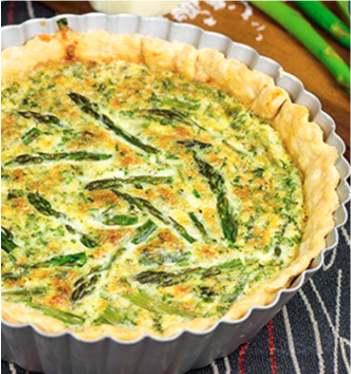
Fat Daddio’s Fluted Tart Pan
Popular Pie and Tart Pans
Pie Pans
- Fat Daddio’s Anodized Aluminum Pie Pan 10 Inches
- Anchor Hocking Mini Pie Plate
- Emile Henry USA Corp. Modern Classics Pie Dish 9 Inches
Tart Pans
- Frieling USA Flan/Tart Pan 11”
- Fat Daddio’s Fluted Tart Pan (pictured above)
- Mrs. Anderson’s Non-Stick Rectangular Quiche Pan
Ramekins and Souffle Cups
Ramekins and custard cups are versatile and practical dishes that add beautiful design and individual-size portions to your kitchen. They come in various sizes that you can fit to your individual baking needs, whether you’re baking individual desserts or portioning out sides.
While both dishes lend themselves to individually portioned dishes, the main difference between a ramekin and a souffle cup comes down to the sides. Where a souffle cup has flared sides and a shallower depth to allow a souffle to rise properly, ramekins have straighter sides that allow for a deeper cavern within.
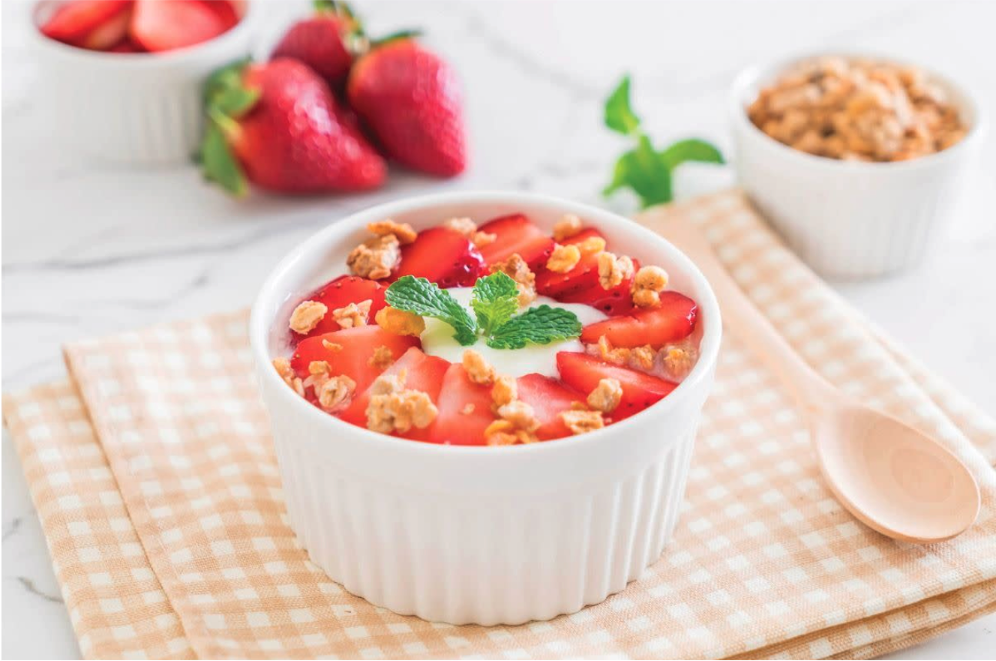
BIA Cordon Bleu 4.5 oz Ramekin
Popular Ramekins and Souffle Cups
- HIC Souffle Ramekin
- BIA Cordon Bleu 4.5 oz Ramekin (pictured above)
- Anchor Hocking 6 oz Custard Cups w/ Lids
Pizza Stones
Pizza stones are specialized bakeware, typically made of stoneware and ceramic, that are perfect for creating crisp and evenly baked pizzas right from home. Typically round or rectangular in shape and designed to fit into the traditional oven, these stones distribute heat evenly and absorb moisture, leading to a perfectly cooked pizza without the necessity of a specialized pizza oven.

Emile Henry USA Corp. Smooth Pizza Stone
Popular Pizza Stones
- Emile Henry USA Corp. Smooth Pizza Stone Charcoal 14 Inches (pictured above)
- NordicWare 3 Piece Pizza Stone Set
- Fox Run Rectangular Pizza Stone
Still Learning Your Way Around the Kitchen?
This blog has, truthfully, just scratched the surface of the broad world of bakeware. To the average home cook, it can feel overwhelming to learn the subtle intricacies of how to find your way around the kitchen.
If you find yourself feeling lost and need some hands-on guidance, stop by Blackstone’s of Beacon Hill. Our Charles Street location – located at 40 Charles Street, Boston, MA 02114 – is equipped with dedicated and friendly staff that will listen to your unique needs and help you to find the best tools for your kitchen.
If you don’t live in the Boston area, you’re not out of luck. Check out the Blackstones website, where you can view our extensive inventory and read through our informative collection of blog posts.

